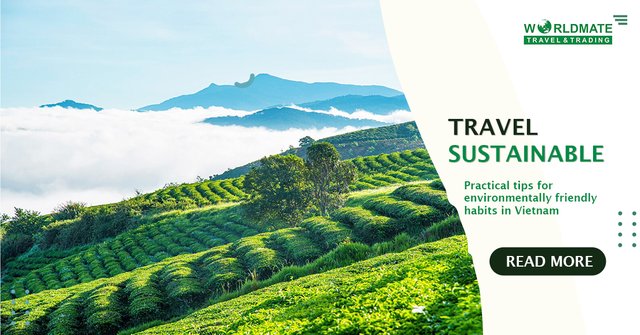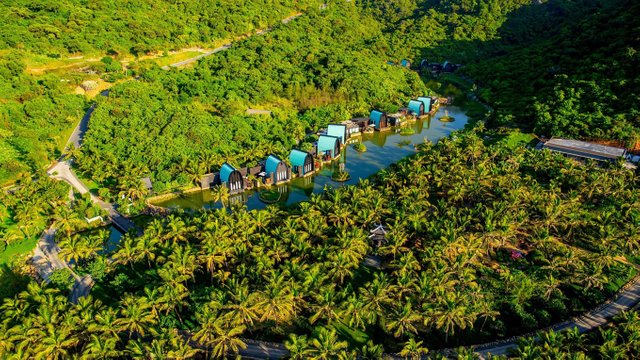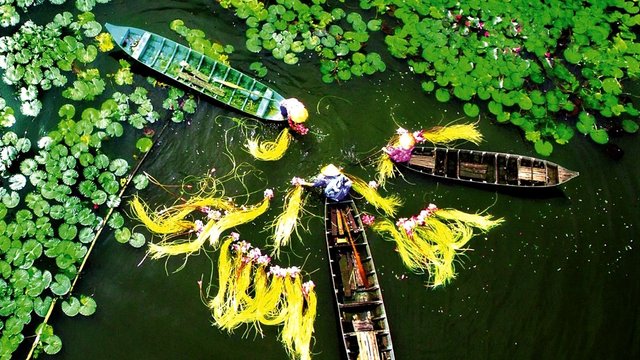Travel sustainable: Practical tips for environmentally friendly habits during their journey through Vietnam

Tourism is a golden industry for the economic condition in each country. It creates lucrative jobs and incomes for locals while promoting local culture, notably ethnic minorities, and small enterprises.
Vietnam, a place of magnificent and cultural treasures, includes a treasure mine of unspoiled gems. While these attractions require little effort, such as a day-long journey or night sleep in the outdoors - they also leave life-changing impacts.
As travelers seek out new destinations to visit, it promotes sustainable travel and emphasizes the long-term preservation of those landscapes. It is a call to action, allowing tourists to go beyond and contribute to the preservation journey. Here are some tips for environmentally friendly visitor behaviors on the journey throughout Vietnam.
I. An introduction to travel sustainably: Vietnam Tourism

1. Travel sustainable meaning
The World Tourism Organization (UNWTO) provides a definition of travel sustainable:
"Tourism that takes full account of its current and future economic, social, and environmental impacts, addressing the needs of visitors, industry, the environment, and host communities."
Travel sustainability means the execution of sustainable practices to limit the negative impacts of tourism while focusing on the positive advantages.
2. Follow the trail: Sustainable travel experiences in Vietnam
Largest natural lake in Vietnam: Ba Be
For eco-conscious travelers looking for an immersive relationship with nature, Ba Be Lake provides you with an exclusive adventure. This place is a complex of rivers, lakes, and lowland evergreen forests, revealing a natural wonder in Vietnam.
The park is home to diverse plant and animal species, many of which are suffering endangered. It carries out incredible biodiversity as the secretive Francois langur to the bright orchid spaces, which leads to cautious preservation. Besides, it is also the home to the Tay people, one of the most popular ethnic minority groups in Northern Vietnam, providing an impressive tourism experience.
Pu Luong - the cascading rice terraces
Pu Luong, located in Thanh Hoa province, has a wide range of natural resources, making it one of the most appealing landscapes. It is famous for its charming hamlets and villages of the Black and White Thai ethnic groups. Tourists can feel a tranquil and unhurried atmosphere here compared to other Vietnam metropolis tourist visits.
Dak Lak - Home to Vietnam’s coffee
Dak Lak is an attractive place to visit in Vietnam, offering a rare opportunity to dive deep into coffee craftsmanship. Every visit transforms your journey into a sensory adventure, from the enchanting aroma that fills the air during the roasting process to the delightful taste of a freshly brewed cup of coffee. Each sip embodies an intriguing display of craftsmanship but fosters a lasting bond with the surrounding environment and the vibrant local communities.
II. 8 practical tips for positive travel sustainability in Vietnam

Animal tourism
While animals such as tigers and elephants thrill us all, most of them should only be seen in their natural environment. World Nomads is an animal tourism activity threatening wild animals.
Also, souvenirs made from animal bodies like a sea turtle shell, bird feather, or seashells might appear. That is why travelers should consider how these things were obtained and whether they were stolen from the wild.
Here are some tips to remember:
- Always read travel reviews before going on an animal encounter or specific tourist destination.
- If you are taking an animal tour, keep in mind that riding them is never a great idea since they will be hurt.
- Tourist behaviors in animals must be educated through violence. Before traveling to any zoo, do research.
- A wildlife-watching excursion, a guided forest trekking tour, or visiting a wildlife sanctuary are the best ways to see animals.
Taking elephant riding tours
Unfortunately, the situation for elephants in Vietnam is crucial. The headcount of wild elephants is constantly decreasing due to habitat degradation, poaching, and agricultural and economic development. Today, only 60 wild elephants are left in Vietnam.
Instead of riding elephants, you can visit Daklak Elephant Conservation Center to interact with them. The Vietnam Elephant Initiative helps tourists learn more about protecting elephants in Vietnam and how to get involved.
Experiencing civet-cat coffee
Many tourists want to buy weasel or civet-cat coffee, which has a distinctive flavor from coffee beans. However, weasels must be trapped with painful snares and wires, imprisoned in small cages, and forced to eat a kilo of coffee beans. Weasels are suffering a lot. Thus, tourists should be encouraged not to use any civet-cat coffee products.
Using reptile-related souvenirs
Snake winem, made from drowning live snakes in alcohol which are endangered species, is another thing threatening sustainable travel. Salmonella made from snakes and other reptiles raises a risk among travelers. Tourists can take part in snake farms as an engaging travel sustainable activity. However, you can watch snakes crash into a liquid like wine to serve human needs.
Immersing into locals
Staying at homestays of local people and engaging in several tourism activities such as trekking and community-based tours provide tourists with many benefits and improve the living conditions of local people. Besides, it is a great way to slow down your journey, learn about local culture, and have tremendous and enjoyable tourism experiences. Additionally, tourists can buy handcrafted products here.
Taking part in Community-based tourism (CBT)
It is ideal to book with a tour operator company committed to travel sustainable, ethical business approaches and improving the local economy. One of the popular travel sustainable practices in Vietnam is community-based tourism (CBT) and other tourism activities that work with international organizations or NGOs, local authorities, and others to offer tourism training and handicraft skills.
Tourists can enjoy trekking routes in Sapa, fully supported by tourism partners and tourists. You can promote travel sustainability by buying local items and products. Most travelers want to contribute to positive impacts on local life, so they are willing to engage in voluntourism packages offered to improve local schools and provide tremendous benefits to local communities.
Recall the hardships and relics of war in Vietnam
Regarding travel sustainability, respecting the hardships of war is another practical tip for environmentally friendly habits. Vietnam has a volatile modern history, so locals vividly recall their experiences and memories during the Vietnam War. Tourists can visit DMZ, war relics, and museums as well.
Reduce plastics when traveling
To do so, tourists can use reusable cloth bags during their journey. Travel with a reusable shopping bag and avoid staff wrapped in plastic, particularly in rural places in which garbage disposal is inadequate.
Besides, you can bring pure water on tap, so instead of using bottled water and contributing to using plastic bottles. Lastly, refilling your reusable bottle with local drinking water suppliers will save money while helping the environment.
Having environmentally friendly habits with a tour operator company – World Mate Travel
As a famous tour operator company in Vietnam, World Mate Travel offers custom tour packages from various countries in Southeast Asia like Vietnam, Thailand, Cambodia, and more, along with adventurous tours, eco-tourism packages, and so on, escorted by professional and skillful tour guides.